Ezekiel choke – Where does the name come from?
The Ezekiel Choke is one of those sneaky chokes that works perfectly for everyone. And we have one man to thank about it – Ezequiel Paraguassú. He was a Judo black belt and Olympian who popularized the Ezekiel choke, an old Judo choke originally called Sode Guruma Jime.
Fortunately, Ezequiel had the opportunity to train at Carlson Gracie Academy, which was a perfect proving ground for the choke’s usage in BJJ.
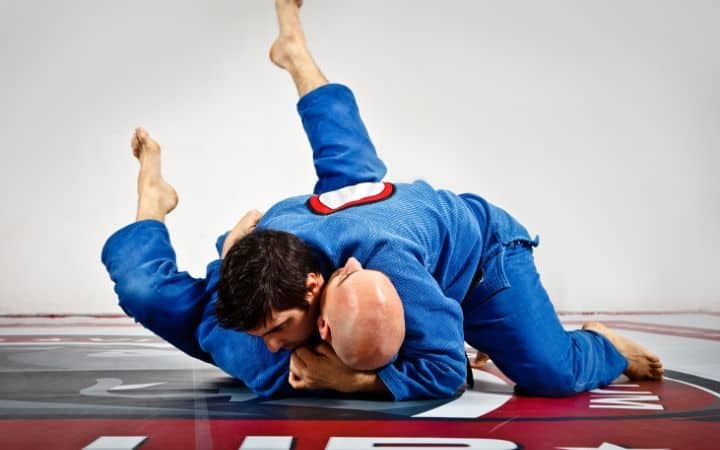
History of the Ezekiel choke
While the name Ezekiel choke is the easiest way to refer to this particular choke, it is not a creation of Ezequiel Paraguassú. As is clearly obvious, even the way the name is spelled in BJJ is different. Nonetheless, the choke is a staple of BJJ, and it was also a huge part of Judo when judoka still paid a lot of attention to Ne-Waza (ground techniques).
Just like with many of the most recognizable submissions in Jiu Jitsu, the Ezekiel choke already existed in Judo. Also like many techniques that we can’t do without in BJJ, Judokas rarely used it, given their fascination with Nage Waza, or throwing techniques.
Looking to thoroughly prepare for the upcoming 1988 Olympics in Seoul, Ezequiel decided to work on every part of his Judo game. Conversely, he ended up with the Sode Guruma Jime as his go-to on the ground.
Paraguassú was also open enough to seek the help of BJJ experts in his preparation, ending up in the Carlson Gracie Academy. Talk about finding the right spot to train when preparing for the Olympics!
It was there that he studied the power of the Sode Guruma Jime. Like most Judoka, Ezequiel had trouble dealing with the closed guard of BJJ players. As his extensive Judo background kicked in, he tried using an almost forgotten move to choke people out from inside their guard…and it worked!
Of course, anything that works is going to attract BJJ players attention, and before long, Ezequiel was teaching the choke to Carlson Gracie Students. As time passed, people started using it outside of the guard, giving birth to the Ezekiel choke that we know and love to this day.
Ezequiel did not manage to win a medal at the 1988 Olympics, nor the subsequent 1992 Olympics. He did, however, provide the BJJ community with a very effective new submission.
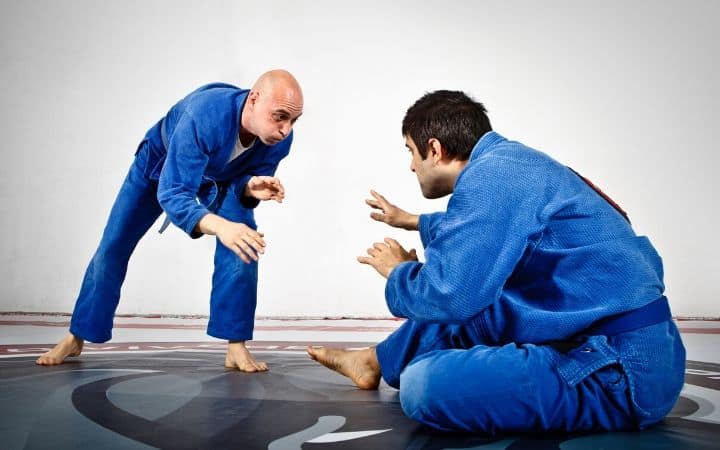
How the Ezekiel choke works
The name Sode Guruma Jime means “sleeve wheel constriction.” Both the original version of the choke, as well as the modern BJJ variation, work by utilizing the sleeve of your own gi. Nowadays, the Ezekiel can be done from anywhere, but the mount, and to a certain degree the top of half guard, remains the best spot to set it up from.
This choke is powerful because it can work as a blood choke and/or an air choke. Most of it depends on how you place your palm and the direction you apply force. The one thing that’s common for both is that people tap. Fast.
Setting up the Ezekiel choke requires you to have one arm under your opponent’s head. This is a position we find ourselves in constantly while rolling.
That means you don’t have to be specifically setting up and thus potentially telegraphing your choke. Instead, what you want to do is sneak four fingers of the arm that is under the head deep inside the opposite sleeve of your own gi.
A key point here is to have your fingers go deep into your sleeve. Of course, once in, get a firm grip inside your own sleeve.
Executing the actual choke requires you to place the palm of your free hand underneath your opponent’s chin. This is where most people go wrong, by trying to use an open hand. Instead, your fingers should be bent so that your hand is smaller and easier to sneak in.
Once that’s in, the finish only requires two more things. First, tighten everything up by sliding both of your arms to the side, bringing the second hand deeper across their throat. The finishing touch is extending your top arm. This will take away any space getting you easy taps.
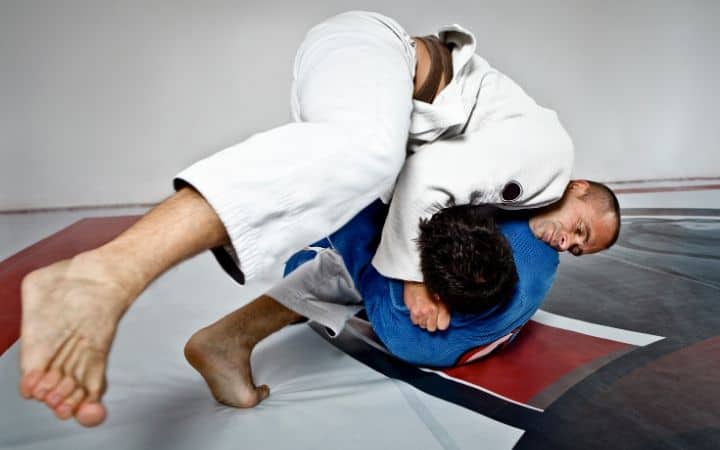
No-Gi Ezekiel choke
In Judo, we will never see a no-gi match taking place. In BJJ, on the other hand, no-gi is only gaining in popularity. Of course, people try to transfer as many techniques and concepts as they can from traditional gi training. Often the necessary modifications render highly effective gi moves next to useless in no-gi.
While some gi chokes are impossible to execute without the gi, others can work with slight modifications. The Ezekiel choke falls under this latter category.
The no-gi Ezekiel choke presents a few challenges, but only until you get the details right. Or, better put, until you get the hang of the slightly different wrist positioning.
Since there’s no gi to hold on to, you’ll have to switch the grips. To begin with, the arm under their head grips right below the wrist of your other arm, fingers going from outside in. It is important to use a monkey (thumbless) grip here in order to get a secure structure.
Finishing requires some adjustments as well. You can’t go as deep, nor use an arm extension as a finishing method. In this case, you want the soft part of the edge of your palm, underneath the pinky finger, making contact with the carotid artery on the neck that is closest to that palm.
Instead of extending, what I find works better is pulling your elbows back and trying to touch them to your ribs. From there rock side to side, like rocking a baby, and you will tap out even the most resilient of opponents.
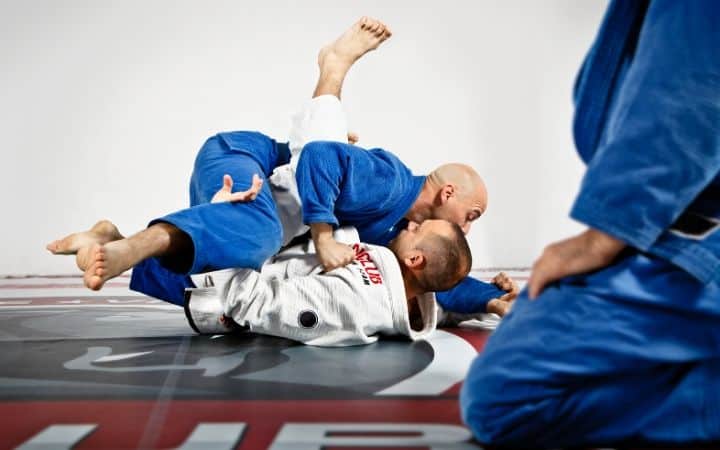
Thinking Outside Of The Box When Doing Ezekiel Choke
There are plenty of reasons the Ezekiel choke is one of the best submissions to go for. The main reason is it is extremely easy to set up and works against almost everyone.
However, it is also a move that can be further developed. After all the choke did start as a submission from inside the guard, something no BJJ practitioner thought was possible. Why not try it out from a different position as well?
Aleksei Oleinik is a UFC fighter that has not only pulled off the Ezekiel choke twice but also did it from the bottom of the mount. Yes, that’s right, the first-ever UFC Ezekiel choke submission was actually from the bottom mount.
Aleksei has an interesting way of setting things up and having MMA gloves on makes the choke easier to apply. With some experimentation, he managed to pull the move off on the biggest possible stage of combat sports competition.
There’s another version that I like to use a lot. It works whenever you’re having a hard time finishing an arm triangle, or a choke from back control. In both cases, the goal is to thread the arm that’s under the armpit all the way through, so that the wrist pops up over the opposite side shoulder. Finishing is easy, as this is the palm whose fingers go inside the Gi sleeve of the opposite arm.
The finish is just like with a rear-naked choke – try and touch your elbows together. In terms of an Ezekiel choke, think of it as one done from the back, with the inclusion of the opponent’s shoulder inside the choke.
One more piece of advice is to go for the choke during transitions: like getting to mount from side control. Improve your timing to make this choke even easier to sink in and finish quickly.
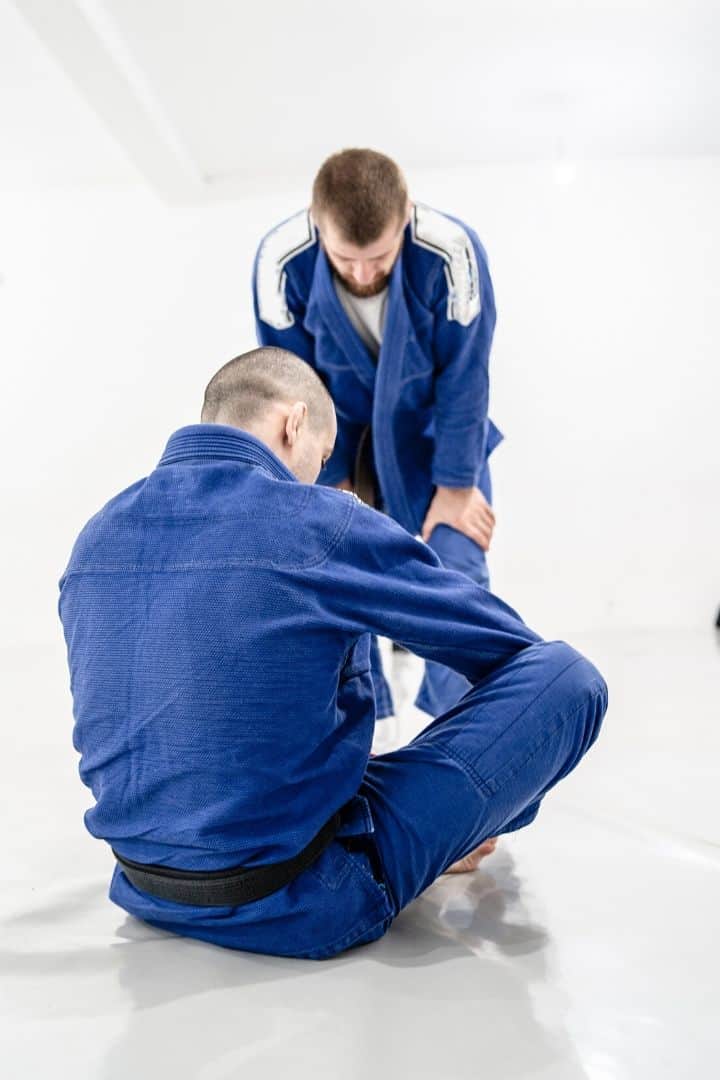
Summary
Top or bottom, gi or no-gi, BJJ or MMA, the Ezekiel choke is right at your disposal. It doesn’t require any prior knowledge of grappling and you can learn how to do it correctly in just a few training sessions. From thereon, the sky’s the limit. After all, the choke happened as a Hail Mary experiment by Ezequiel, so why not keep working on it and come up with a version of your own? Be sure to share your findings!

We care about Jiu Jitsu so much that we decided to create this page for all the people like us – that eat, breath and live the Jiu Jitsu Lifestyle! We truly hope our content will make every one of your days better, on the mat and off the mat!
